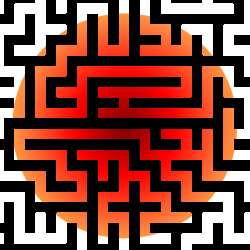Equation Based Factor Trees
Lesson Plans > Mathematics > Algebra > FactoringEquation Based Factor Trees

For some of my algebra students, they see factorization of algebraic expressions as vastly different from factoring numbers. They see "factoring" as two completely different concepts, depending on whether we're talking about numbers or expressions with variables. It can be hard to convince them that it's actually the same concept. Here are some ideas to help students make the connection.
Clear Definitions
Be sure to clearly define what it means to factor something, and what it means to fully factor or "prime factor" something. Note that in these definitions, I use the word "expression" - all numbers are expressions, so the definition works for both numbers and more complex expressions involving variables.
Factor: to write an expression as the product of two other expressions that multiply together to make the original expression.
By this definition, there are often multiple ways of factoring something. Here are two examples. One is a number, the other is an expression with variables.
48 = 2 x 24 = 3 x 16 = 4 x 12, etc
8x2 + 4x = 4(2x2 + x) = 4x(2x + 1) = x(8x + 4), etc
Prime Expressions: A prime expression is an expression which cannot be factored without using ±1 as a factor.
17 is a prime expression because the only way to factor it is 1 x 17 or -1 x -17. (Technically, it could be factored asz + 3 is a prime expression because it can only be factored as 1(z + 3) or -1(-z - 3).
Prime Factorization (or Full Factorization): to write an expression as the product of two or more prime expressions raised to integer powers.
It turns out that there is only one way to write a prime factorization; even though there may be multiple ways to write a factorization, once you stipulate that you only want prime factors, you've narrowed it down to a unique factorization.
48 = 24 x 3
2x2 + 8x + 8 = 2(x + 4)2
Equation Based Factor Trees
When I was in school I was taught to do factor trees. Most math books I've seen also teach factor trees, and the method is similar to this: Factor Trees. However, this way of factoring numbers lends credence to the idea that factoring numbers is different conceptually from factoring algebraic expressions, because it looks very different from what we do with algebraic expressions. There is another method that I've begun teaching my students, which involves a little more writing, but conceptually looks a lot more like what they do when factoring algebraic expressions. Let's take the number 48. This is how it looks:
48 = 6 x 8 / | / | = 2 x 3 x 2 x 4 | | | / | = 2 x 3 x 2 x2x 2 = 24 x 3
I call this approach "equation based" because the focus of the process is a series of equations. As I said, it takes more writing, because we don't stop writing out the prime factors. But if students are doing factor trees this way, it's actually a very small step to doing algebraic expressions:
2x2 + 8x + 6 = 2(x2 + 4x + 3) = | / | = 2 (x + 3) (x + 1)
This factorization process works exactly like the equation based factorization shown above for the number 48. If students have been trained to write factorization trees like this, they are far less likely to drop out factors along the way, and they are more likely to understand that they're doing exactly the same process as they've been doing all along for numbers!
A Developing Ruleset
One of the things students struggle with is "How do we know if an algebraic expression is prime?" My answer to that question is: "All expressions are considered to be prime until I give you a rule that helps you factor them." This is an important idea, because it reinforces the idea that my students are developing a ruleset for factoring expressions, and just because something is "unfactorable" now doesn't mean that it will always be unfactorable. For example, my algebra one students will tell you that x2 - 5 is unfactorable, while my algebra two students will tell you that it's (x + 5
5 5
5 5
5 5
5
